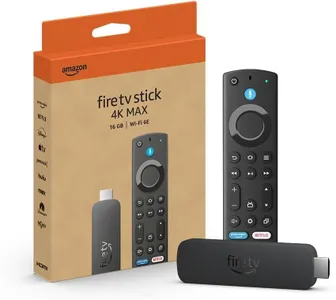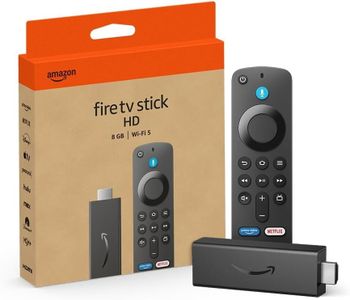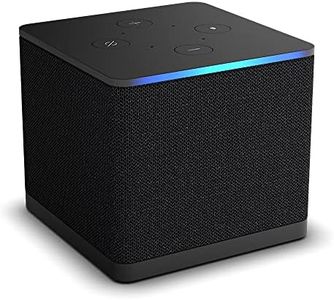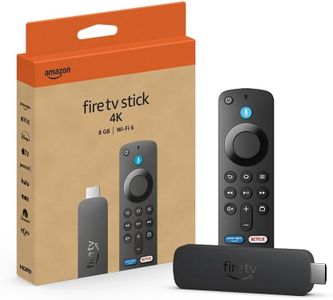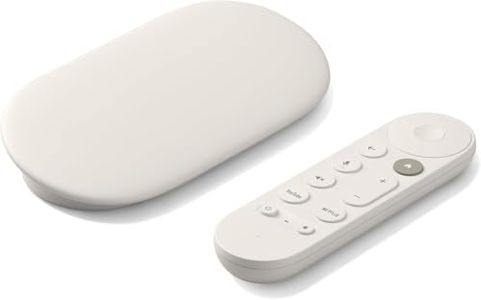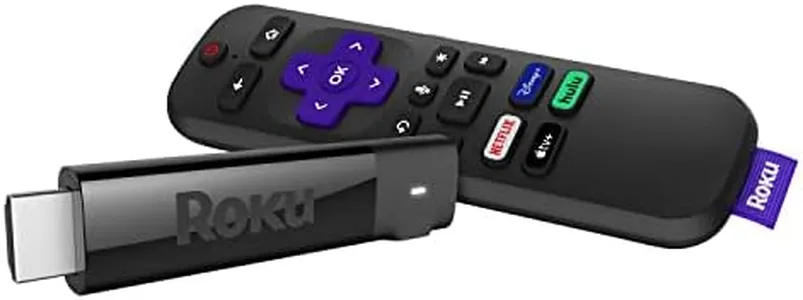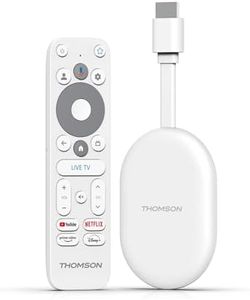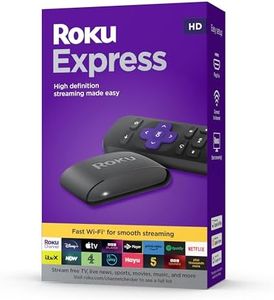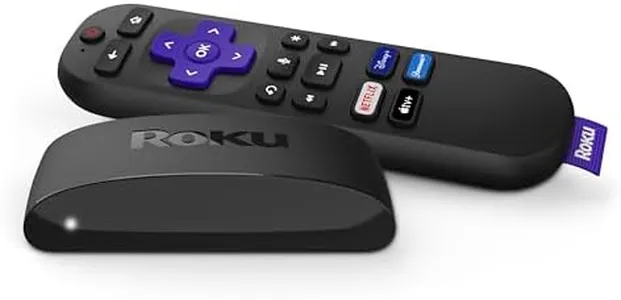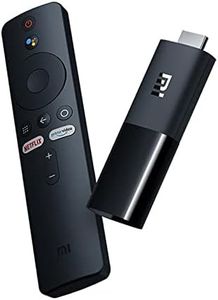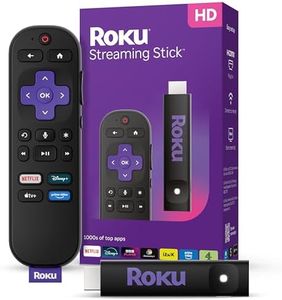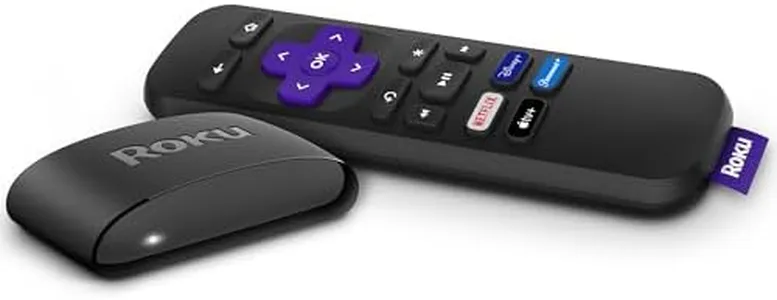We Use CookiesWe use cookies to enhance the security, performance,
functionality and for analytical and promotional activities. By continuing to browse this site you
are agreeing to our privacy policy
10 Best TV Streaming Stick
From leading brands and best sellers available on the web.By clicking on a link to a third party's website, log data is shared with that third party.
Buying Guide for the Best TV Streaming Stick
Choosing the right TV streaming stick can make your home entertainment experience easier and more enjoyable. The key is to focus on features that fit your needs, whether you love watching movies, streaming shows, or just want a simple solution for turning your TV into a smart one. To find the best match, think about what you watch most, the devices you already own, and the kind of TV you have. Understanding some key specs will help you pick a streaming stick that works well, is smooth to use, and fits into your daily routine.Resolution SupportResolution support tells you what picture quality the streaming stick can handle, such as HD (720p), Full HD (1080p), or 4K Ultra HD. This spec is important because you want your streaming experience to match the picture quality of your TV. If your TV is only HD, a stick that supports just HD or Full HD is enough, but if your TV is 4K, look for a stick that supports 4K streaming. Always match the streaming stick's maximum resolution with your TV’s capabilities for the best picture without overpaying for features you can’t use.
Operating System and App AvailabilityThe operating system is the software that runs on the streaming stick, and it affects the look, feel, and speed of the device. This spec also determines what streaming apps and services you can access. Some sticks have systems with a vast app library while others are more limited. If you have favorite apps or need specific services, check that they are available and easy to access on the stick you choose, especially if you are tied to certain ecosystems (like Google, Apple, or Amazon).
Remote Control FeaturesRemote control features consider both the design and functions of the streaming stick's remote. Some remotes have voice search, TV power and volume buttons, or shortcuts to popular apps, making your experience smoother. Decide if you want a basic remote for simple operation or a more advanced one with voice controls and more buttons. If you like hands-free control or accessibility, look for voice-enabled or universal remotes.
Wi-Fi ConnectivityWi-Fi connectivity refers to the type of wireless connection the stick supports, such as Wi-Fi 4 (802.11n), Wi-Fi 5 (802.11ac), or Wi-Fi 6. This matters for streaming stability and speed. If you have a newer, faster home Wi-Fi network or plan to stream in 4K, a stick with higher Wi-Fi capabilities will reduce buffering and give you a smoother experience. For basic streaming in standard HD or smaller homes, older Wi-Fi versions may be enough.
Audio SupportAudio support describes the sound formats the stick can deliver, such as standard stereo, Dolby Audio, or Dolby Atmos. If you use a soundbar or home theater, you may want advanced audio for surround sound experiences. Pick a stick with sound formats that match your audio equipment, but for basic TV speakers, this may not be a top concern.
Setup and Power SourceSetup and power source look at how easy it is to install the stick and how it's powered. Most streaming sticks plug into your TV’s HDMI port and use a USB cable for power—some can plug into a TV's USB port, others need a wall outlet. Consider your TV’s available ports and whether you want a simple plug-and-play option or are comfortable with extra cables and power adapters.
Casting and Screen MirroringCasting and screen mirroring let you send videos, photos, or even your whole phone’s screen to your TV through the stick. If you often use your phone, tablet, or computer to watch content and want to see it on the big screen, look for a stick that excels at casting or mirroring, especially if you use certain brands or operating systems on your devices.
Size and DesignSize and design affect how visible the stick will be and how easy it is to fit behind your TV. Some sticks are very small and plug directly into the TV, while others have short cables or may be larger. If your TV is mounted close to a wall or has crowded ports, choose a compact stick that won’t get in the way.
